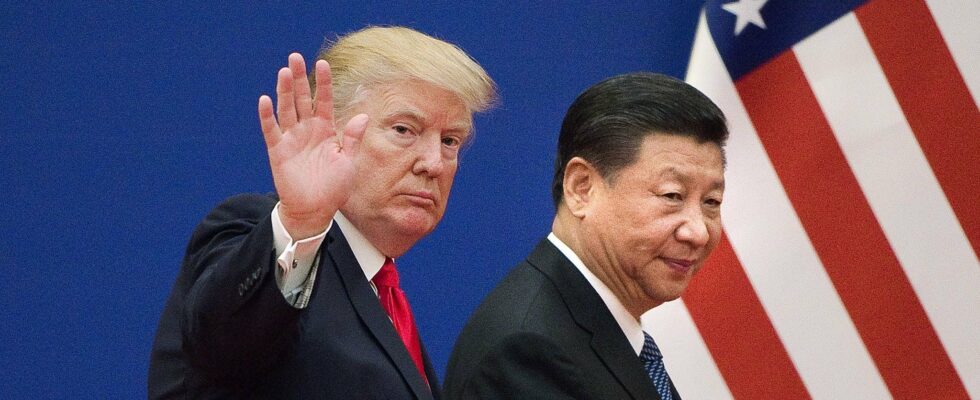$215 million. This is the amount of trade that the United States carried out with its three main partners in 2023, namely Mexico, Canada and China (imports and exports combined). This corresponds to 42.5% of their overall trade. In detail, they imported more than 1,300 billion dollars of goods from these countries and exported around 1,000 billion, which makes their trade balance extremely deficit. During the presidential campaign which has just ended, Donald Trump regularly promised to reduce this imbalance, in particular by imposing heavy customs taxes on products imported into the United States. Canada, Mexico and China are on the front line.
On Monday, November 25, the new president detailed how he intended to carry out these measures in a message published on Truth Social. “For one of my many first decrees,” he announced, “I will sign all the necessary documents to impose 25% customs duties on ALL products entering the United States on Mexico and Canada.” In exchange for lifting these taxes, Donald Trump is asking his partners to be more severe in controlling migratory flows at the border.
These statements have caused a lot of concern on both sides of the American borders. The three countries have in fact been linked by a free trade agreement since 1994: Nafta, now Aceum, for “Canada-United States-Mexico Agreement in 2018. At that time, during the previous Trump presidency, the three partners had hard negotiated a new version of their commercial alliance. The text signed then provides for a new round of negotiations in 2026 and the new taxes imposed by Trump could disrupt their partnership. Canadian, thus deemed it useful to point out to his future counterpart that Canada was “essential for the energy supply” of the United States.
The example of fentanyl
But Mexico and Canada are not the only countries targeted by the Trumpist offensive. During his campaign, Donald Trump also vowed to impose new customs taxes on Chinese products; products that he had already targeted during his first mandate. According to the Peterson Institute for International Economics, an American economic think tank, Washington has imposed tariffs on approximately two thirds of Chinese products imported into the United States between 2018 and 2023. Today, the average amount of these taxes is around 20%, or between six and seven times more than five years ago. Donald Trump hopes to increase them again, by at least 10% on all products.
Since 2018 and the implementation of these customs taxes, China has systematically responded by imposing slightly higher taxes. Liu Pengyu, spokesperson for the Chinese Ministry of Affairs, said “that trade and economic cooperation between China and the United States is mutually beneficial in nature.” Such an increase in customs duties could, however, relaunch the “trade war” which animated Donald Trump’s first term.
In another message posted Monday on Truth Social, the American tycoon accused China of laxity in its way of preventing the production and export of fentanyl to the United States. This opiate created across the Atlantic – and widely imported today – is the cause of a huge health scandal. Many Americans are today dependent on this drug, the active ingredient of which is often transported from China to Mexico, before being exported in the form of tablets to the United States. “As long as the Chinese representatives do not prevent [les dealers d’inonder le marché américain]we will impose a 10% customs tax on all the many products they sell in the United States,” Donald Trump threatened.
